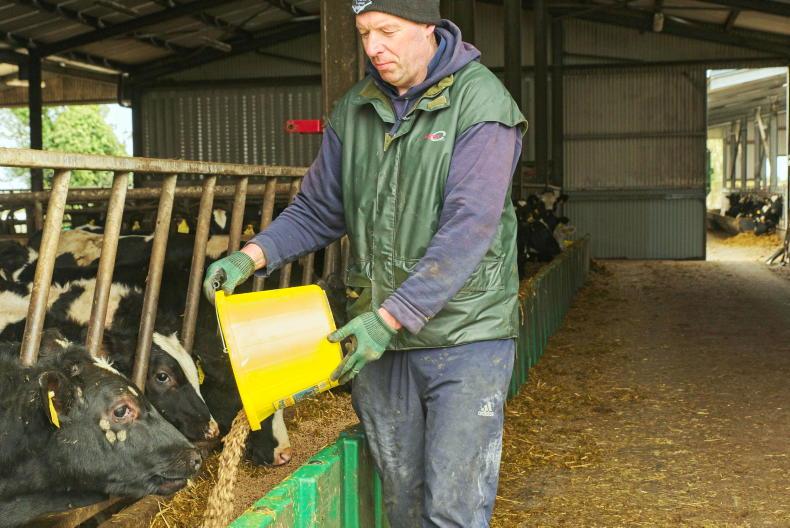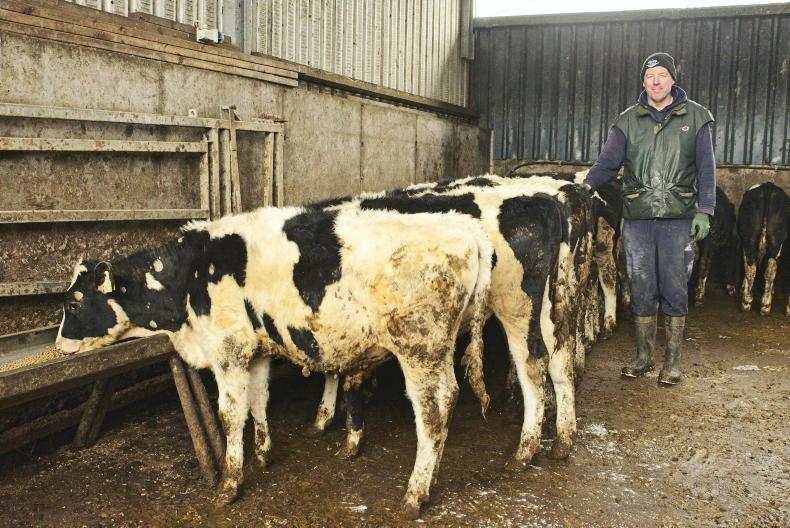I farm: “Outside the town of Mountbellew, Co Galway. I am originally from Tynagh in south Galway but have been living in Mountbellew for 24 years, where my parents bought a small farm in the 1970s. I farm 60 adjusted acres and rent twice that amount, mostly on long-term leases.”
Farming career: “I have been working with livestock since I was nine and I could never see myself being involved in anything outside of agriculture. Originally a suckler farmer, I now contract-rear heifers as well as running a calf-to-beef system. I work as an AI technician during the busy breeding season.”

\ David Ruffles .
Contract rearing: “I started contract rearing heifers in 2013 with 18 heifers and expanded to over 400 heifers at one stage when dairy expansion was at its peak. The calves come to my farm well-reared, they’re weaned and have started on concentrates.”
Breeding: “We work hard to have good heat detection on the farm, aiming to hit 96% to 98% in-calf after the first six weeks. It ties in well with the calf-to-beef in terms of cashflow every month as most of the bullocks are sold in the latter part of the year, but some heifers start to go home in September when farmers start to have second-cut silage ground available.”
AI: “During the busy breeding season, I could find myself working 20 hours a day travelling on the road throughout Galway. It suits my farming system, being a seasonal job.”

\David Ruffles .
Calf-to-beef: “Every year I buy 100 calves to rear to finish. I invested in an automatic feeder recently and it takes out a huge portion of work. The calves are weaned after 75 days and finished as 21- to 22-month-old bullocks. Over the years I have learned how key calf rearing is. A calf can be the most efficient animal on a farm with the ability to return 2:1 in the first six months of its life.”
Weather: “Apocalyptic would probably best describe it. Almost all cattle got up to 15 days on grass earlier in the month but unfortunately have been all re-housed. They are happily living it up in the cubicles again consuming over 30kg of silage and 0.25kg of straw per day and are not remotely interested in going out again at the moment.”
I farm: “Outside the town of Mountbellew, Co Galway. I am originally from Tynagh in south Galway but have been living in Mountbellew for 24 years, where my parents bought a small farm in the 1970s. I farm 60 adjusted acres and rent twice that amount, mostly on long-term leases.”
Farming career: “I have been working with livestock since I was nine and I could never see myself being involved in anything outside of agriculture. Originally a suckler farmer, I now contract-rear heifers as well as running a calf-to-beef system. I work as an AI technician during the busy breeding season.”

\ David Ruffles .
Contract rearing: “I started contract rearing heifers in 2013 with 18 heifers and expanded to over 400 heifers at one stage when dairy expansion was at its peak. The calves come to my farm well-reared, they’re weaned and have started on concentrates.”
Breeding: “We work hard to have good heat detection on the farm, aiming to hit 96% to 98% in-calf after the first six weeks. It ties in well with the calf-to-beef in terms of cashflow every month as most of the bullocks are sold in the latter part of the year, but some heifers start to go home in September when farmers start to have second-cut silage ground available.”
AI: “During the busy breeding season, I could find myself working 20 hours a day travelling on the road throughout Galway. It suits my farming system, being a seasonal job.”

\David Ruffles .
Calf-to-beef: “Every year I buy 100 calves to rear to finish. I invested in an automatic feeder recently and it takes out a huge portion of work. The calves are weaned after 75 days and finished as 21- to 22-month-old bullocks. Over the years I have learned how key calf rearing is. A calf can be the most efficient animal on a farm with the ability to return 2:1 in the first six months of its life.”
Weather: “Apocalyptic would probably best describe it. Almost all cattle got up to 15 days on grass earlier in the month but unfortunately have been all re-housed. They are happily living it up in the cubicles again consuming over 30kg of silage and 0.25kg of straw per day and are not remotely interested in going out again at the moment.”









 This is a subscriber-only article
This is a subscriber-only article










SHARING OPTIONS: